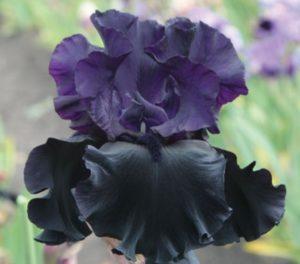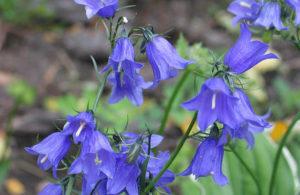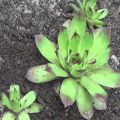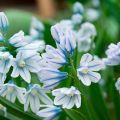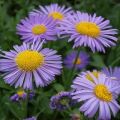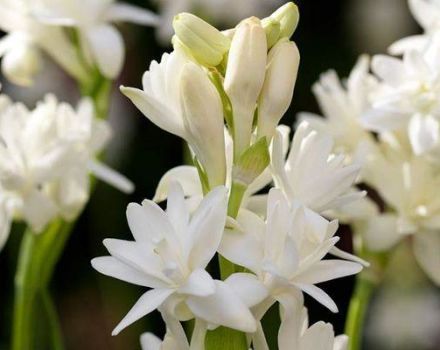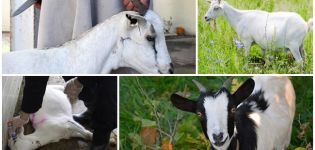Description of the 23 best varieties of tenacious, planting and care features
Tenacious (another name - Ayuga) is a herbaceous plant, different species of which are found all over the world. Most of them (about 70 species) grow in temperate climates. In our country, it is called differently, and is used not only to create garden compositions and planting on flower beds, but also for the preparation of medicines and cosmetics. Gardeners have bred a huge number of tenacious varieties, but each of them has a high survival rate. With proper care, such a flower will decorate the site for a long time.
Description
Different types of tenacious are very different from each other, and the plant can be evergreen, semi-evergreen, in some cases it even loses its leaves for the winter. The stems are straight, grow up to 40 centimeters, less often - up to half a meter. At the bottom of the stem, the leaves are large, shrinking towards the top. Ayuga inflorescences are similar to spikelets, they usually have 6-8 flowers, which can be blue, blue, purple in color. There are burgundy, red, darker shades.
Features:
All varieties of tenacious grow well in almost any conditions. This plant is cold-resistant, capable of thriving even on poor soil and covering the entire area with a continuous carpet.
In fact, the only thing that Ayuga needs is sufficient moisture. It is possible to grow even in dark places of the site, but at the same time the color of the flowers fades, they can even turn white.
Types and varieties
At first glance, the tenacious may seem like a simple flower, but gardeners have bred many varieties. They differ in color, height and many other parameters.

Creeping
The creeping insect is one of the species that gardeners are especially fond of due to the variety of colors. A great advantage of this species is its long flowering, so it should be chosen if you want to keep the garden attractive for the whole season. After the onset of autumn, the plants look as if the buds have just blossomed, and stand out favorably on the site. This species gave rise to those varieties that have now gained particular popularity among gardeners.
Arctic Snow
This variety was bred recently, and it differs, first of all, in its unusual leaves. They are quite large, spatulate, wrinkled. Colored in dark green, but in the middle there is a whitish spot. Along the edge there is also a white edge.
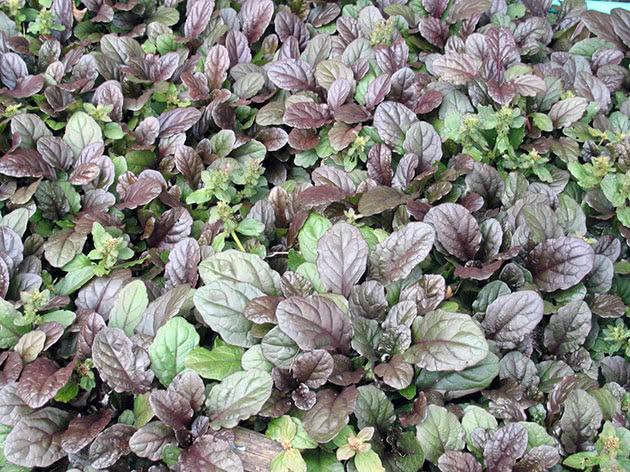
Black Skallop
A low grade, it can rise a maximum of 10 centimeters above the ground.The leaves look unusual - embossed, with an uneven, wavy edge, reminiscent of beet leaves, also due to the purple color, which darkens towards the middle. When planted in sunny places, the shade becomes especially bright.
Chocolate Chip
Height - about 6 centimeters, the leaves are also small, elliptical. They can be painted in various shades of green or purple. The advantage of this variety is that its color is not affected by the presence or absence of sun color.
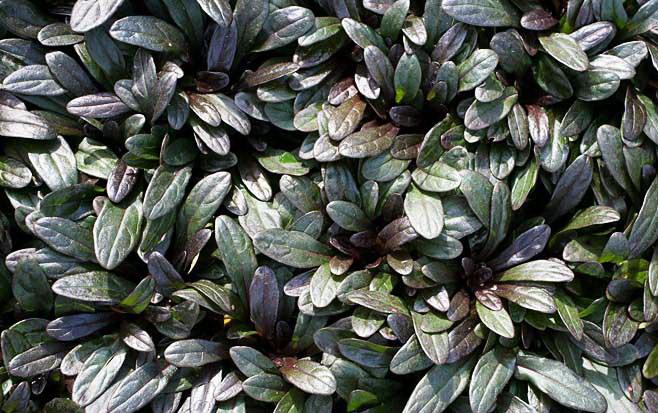
Multicolor
This variety is especially sensitive to the amount of light, since it directly determines what color will appear on each part of the leaf:
- in the shade, the leaves darken, turn green, but there are patterns of pinkish and lemon-yellow shades;
- in the sun - deep purple, with scarlet, orange, red or yellowish stains.
Therefore, Multicolor is most often planted in different parts of the site, to compose a bright composition of the bushes.
Burgundy Glow
The leaves are colored bright purple and violet. At the edges, the shade brightens, becoming creamy, in the center are scattered reddish-pink specks of different sizes. It is best to plant Burgundy Glow in shaded areas, then the difference between the color of different parts will be better visible.
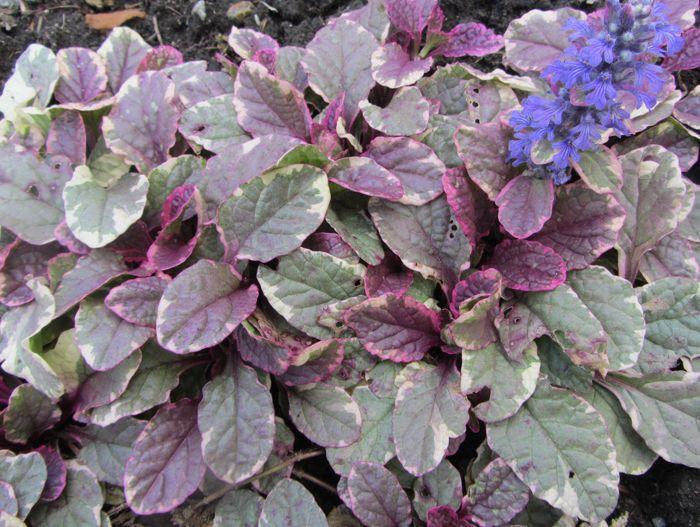
Sparkler
Another bright and beautiful variety, also called Sparkler creeping. Flowers - deep blue, leaves - small and variegated, green in color, with white or light pink "splashes".
Variegata
Leaves are grayish green or even silvery in color. There is a strip along the edges, and its color on each sheet varies from white to cream. Variegata refers to varieties that take a long time to bloom, but it can be planted in the darkest places, and then the tricolor color of the leaves will be more contrasting.
Pink elf
One of the longest flowering varieties. Flowers are pale pink. Unlike other Ayuga varieties, the color of the leaves is grassy green, uniform, the leaves themselves are small.
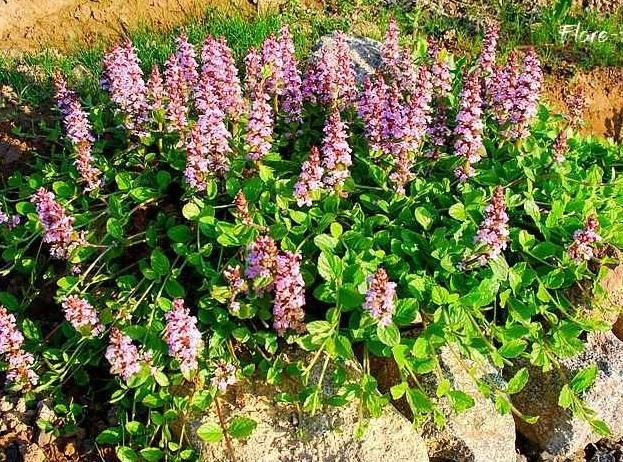
Dark purple
It belongs to the least capricious, therefore it has gained great popularity among gardeners. The Atropurpurea variety has red leaves with a bronze tint and blue flowers, which together give an unusual and beautiful combination.
Rainbow
This variety has especially variegated leaves. By themselves, they are purple or dark green, but the spots can be of various shades - red, light green, red, white and yellow. In addition, such a tenacious grows with a particularly dense carpet, in which there are no glades.
Polar fox
The variety is fully consistent with its name, since the grassy background of the leaves is often almost invisible under the snow-white stains. It is better to plant in a sunny place, it is also important to maintain humidity.
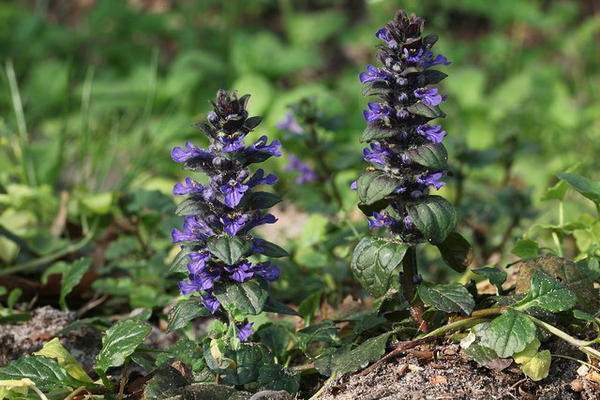
Rosea
Medium height, grows up to 25 centimeters. The shape of the leaves is oval, serrated at the edges. The flowers are colored in different shades of pink and, although small, together form beautiful bright inflorescences.
Ajuga reptans atropurpurea
The low stems contrast interestingly with the large, green-brown leaves. The color of the flowers is bluish or blue, flowering continues all summer, during this time the flowers periodically wither, then new ones bloom. Suitable for both sunny and shaded places, but if you plant it in a warm place, where the plant will be exposed to direct sunlight, the site will need abundant watering.
Pyramidal
The pyramidal tenacious is a rather exotic species of this herb that came to us from the Alps. It grows up to 26 centimeters, the leaves are large, serrated, have the shape of an almost regular oval. An interesting feature of this species is the edging of white villi that grow both along the leaves and along the stem. This variety is very fragile, it is easy to damage it, so you need to take care of it and transplant it carefully.
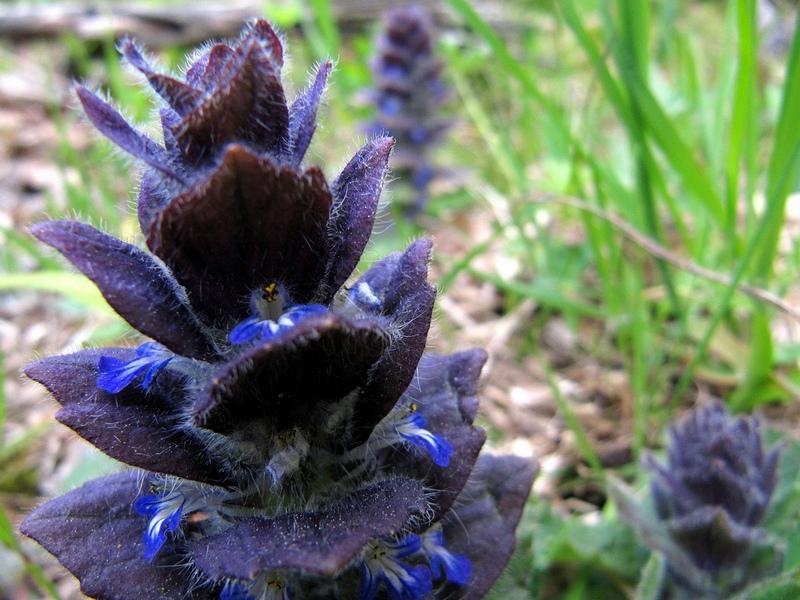
Lunar Landing
One of the few varieties that can delight with lemon flowers, together forming long narrow clusters. They stand out brightly against a background of green or dark purple leaves.
Crisp
Unlike other varieties, the leaves of Crispa are colored uniformly green. Inflorescences are light blue.
Metallica Crisp
As the name implies, this variety differs from the previous one in the color of the leaves - they are green-purple, with a metallic sheen. The tenacious itself grows short, up to 5 centimeters.
Geneva
This species grows best in full sun. The height is up to 40 centimeters, the leaves are elliptical, along the edge there are pointed teeth. The flowers of the Geneva tenacious are painted in different shades - blue, blue, pink, white.

Blue ocean
Height - up to 20 centimeters, the leaves are dark green, the flowers, as the name suggests, are dark blue. Often used for landscaping large spaces.
Helena
It differs in that during growth it does not spread along the ground and does not grow in width, therefore this variety looks more aesthetically pleasing than others. Inflorescences are colored in various shades of lilac.
Chios
The Chios tenacious was recognized not only as an ornamental plant, but also as a medicinal plant due to its antibacterial properties. This variety grows up to 20 centimeters. Leaves - oval, serrated or serrated at the top of the leaf. Flowers are small, yellow, may have purple splashes.
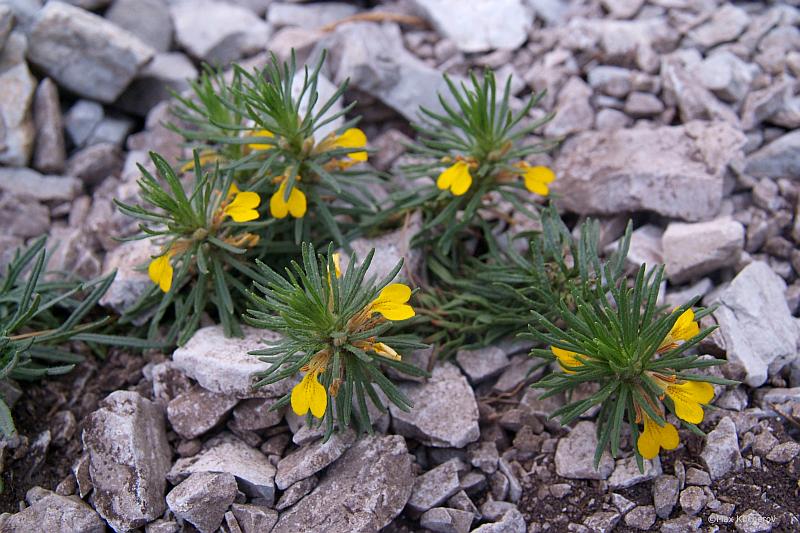
Laxman
One of the most unusual varieties, also due to its height - up to half a meter. The leaves are whole, not serrated, large, green in color, covered with long hairs, as well as the stem. Inflorescences can be pink, yellow or mixed shades.
Herringbone
Besides the fact that this variety of Ayuga has serrated, separate leaves of a silvery-green color, similar to spruce needles, they also emit a distinct coniferous aroma. Inflorescences are yellow, bloom from May to late autumn.
Turkestan
The native land of the variety is the western Tien Shan, Tajikistan and Uzbekistan. Small shrub, elliptical leaves, light green. Lilac and purple flowers are located at the tops. First of all, this Ayuga is used in sports medicine and cosmetology, as an ornamental plant has not found much use.
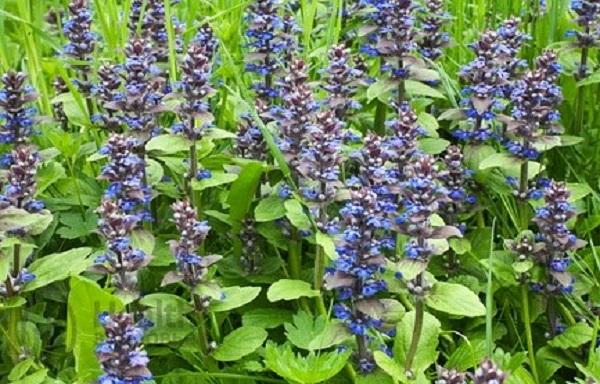
Growing from seeds
Ayuga can be planted in almost any area. For this purpose, seeds are often used, which are planted immediately in open ground.
Landing dates
The tenacious plant is an unpretentious plant, so you can plant it at different times of the year:
- In the spring, when the earth has already warmed up, the best time is the second half of May. For planting, wait for a warm day without precipitation.
- In late autumn.
The plant will not be damaged by frosts even down to -10 degrees.

Choosing a place and neighbors
The choice of location largely depends on the variety, but most of them grow well in shade or partial shade. Therefore, you can plant the tenacious under trees and bushes. It won't take away the nutrients they need. But the more fragile plants and primroses can be hammered by the tenacious with its shoots. The best soil is garden soil or wet loam.
How to plant correctly
Before sowing, the earth must be dug up. The seeds themselves are buried at a shallow depth - up to 2 centimeters. There should be 10-15 centimeters between the rows, and 8-10 between the plants. In the spring, it is better to mulch planted survivors with humus or peat, in winter - with rotten leaves.

Top dressing and fertilization
You need to feed the tenacious animal 1-2 times a month. Although the plant grows well in poor soil, such care will have a positive effect on the decorative appearance. It is best to use organic fertilizers:
- manure;
- compost;
- peat;
- ash.
Along with watering, also apply phosphorus-potassium fertilizers.
After flowering
The seeds formed after flowering usually do not retain the qualities that the variety possesses, and the plants from them are not so beautiful. However, the tenacious can multiply by self-seeding, as a result, its growth spreads outside the allotted area and takes up the places that you wanted to give to others. Therefore, it is better to cut off the testes in advance.
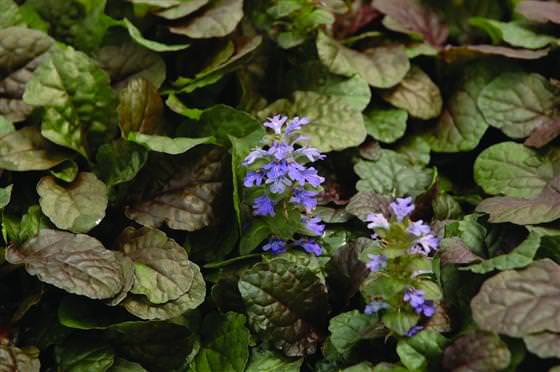
Wintering
In most cases, adult plants hibernate well without additional shelter. But if there is little snow, it is better to sketch on top of a dry leaf or spruce branches. Be sure to cover the newly planted bushes, they freeze out much faster.
Garden care, and what role it plays
The main thing that is required for good growth of a tenacious and preservation of its decorative qualities is control over growth. A lot of work will not be required - you just have to pick off excess inflorescences, and make a fence around the plants, for example, from stones.
Before the young leaves appear, it is important to water them abundantly and protect them from direct sunlight.
After this period, watering is required only during dry periods. In the garden, the plant easily covers large areas with a carpet, creating beautiful lawns.
Reproduction
You can propagate a tenacious animal in different ways.

Seeds
Breeding in this way is not the best option, it is suitable only for those who are just starting to practice hardiness and do not have adult bushes to get outlets. If there are such plants, and you still decided to take ripe seeds from them, be prepared for an unexpected result. Ayugs obtained from them are unlikely to correspond to the description of the variety.
Vegetatively
Breeding in this way should be left for March or the first quarter of September. The sockets that have managed to appear on the mother plant are cut off and planted in the place where they will already grow constantly. You can get many new bushes, because it does not matter if the roots of the cuttings are dense, you can take those with one root.
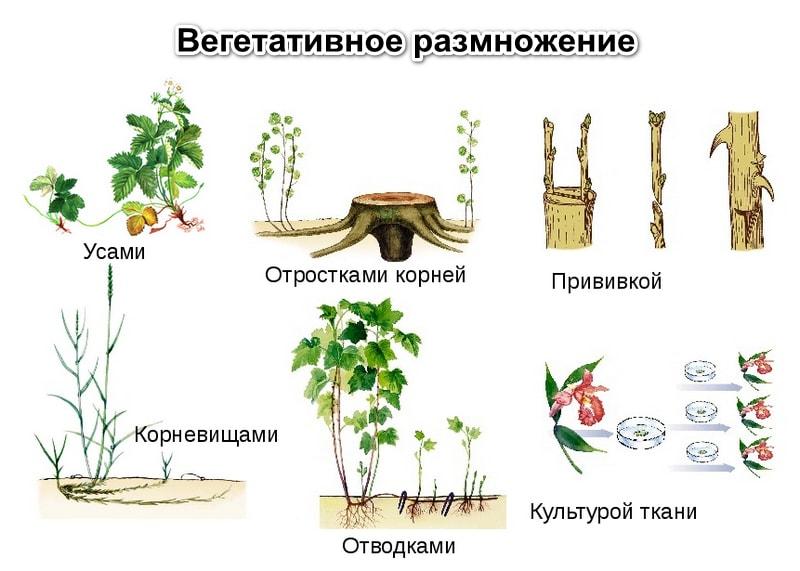
Diseases and pests
By itself, Ayuga is resistant to pests and diseases, but some measures must be taken.
Fungal rot
With high humidity, fungal rot occurs. As a result, roots and shoots rot, and flowers do not form. To prevent the disease from spreading, carefully remove the affected parts, treat the remaining shoots with fungicides.
Garden snails and slugs
The appearance is also associated with moisture. It is easy to notice these pests, especially the larger specimens, and if you look closely, you will find eaten leaves and holes in them. It is simple to protect the plant - pour a dense layer of gravel or crushed stone around the place where Ayuga grows, another option is to spray with an ash solution.
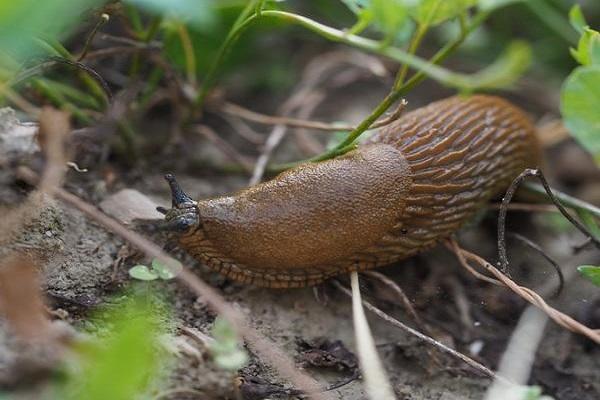
Use in landscape design
There are many ways to decorate your garden with Ayuga:
- suitable for planting in flower beds, in rose gardens, greenhouses and even winter gardens;
- serve as a hedge;
- due to its short stature, it will look good in the foreground of the composition.
In compositions it is combined with conifers, ferns, irises.
Reviews
Gardeners who decided to plant this plant in their own place note that the tenacious lives up to the name. Unpretentious flowers grow quickly, and they are planted even where people will walk. The main disadvantage is that Ayuga easily moves to neighboring areas, so it is important to control the spread.
